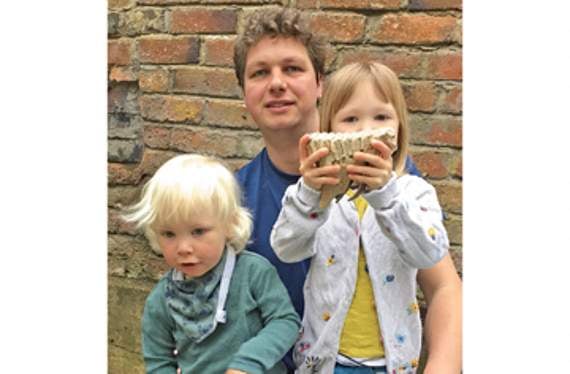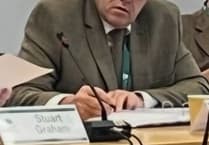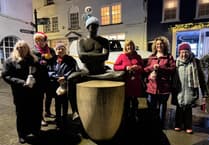THE Forest is known for its spectacular wildlife, but an Indian elephant doesn’t top the list of animals we expect to encounter, making the discovery of a modern elephant molar near Cannop Ponds earlier this month something out of the ordinary.
Ben and Hannah Prothero were visiting from Stroud when they happened upon the tooth while walking in the area with their children.
Hannah told the Review: “My husband spotted it in an area of ground where the boar had obviously been rooting. It was just on top of a mound of soil. We were really excited as we thought it belonged to a baby mammoth.”
After making the find, Hannah got in touch with Dean Heritage Centre and with Gloucestershire and Avon finds liaison officer Kurt Adams, who referred the enquiry to the natural history curator at Bristol Museum and then to the Royal Holloway University of London (RHUL).
Prof. Danielle Schreve of RHUL said: “It looks like a left-hand lower molar of an Indian elephant, from a fairly young adult animal and it’s clearly modern. The enamel is typically thick and wrinkled and the plates have a ‘step-like’ appearance that is not found in mammoths.
“A lot of Indian elephant teeth were picked up in colonial times and brought back to Britain as curios – a surprising amount of them turn up.”
Nicola Wynn, collections officer at Dean Heritage Centre, said: “We know from historical evidence that there were circuses and performing elephants in the Dean, but we don’t know whether this tooth is from a whole elephant buried at Cannop or whether it’s just a one-off.”
Forest poet Keith Morgan immortalised an even more startling encounter in verse back in the 1950s. He worked as a barber in Coleford at the time and said: “This fellow from Bream told me the story. He was cycling to work at Lydney Tinworks and was amazed to come round the Leechpool Corners to be confronted by an unaccompanied elephant in the middle of the road. I decided to write a poem about it.”
Hannah plans to donate the tooth to Dean Heritage Centre, adding: “We had hoped it was a mammoth tooth, but to find out that it was from a modern elephant is even crazier. My father-in-law remembers travelling elephants in the Forest and was very excited about the find.”
The portable antiquities scheme encourages the voluntary recording of archaeological objects found by members of the public in England and Wales. If you find artefacts or specimens in the Forest, email kurt.adams@
bristol.gov.uk or contact Dean Heritage Centre on 01594 822170.
----------
Ivor and the Elephant
On ’is woy ta work wuz Ivor
‘Alf past vive – the early shift.
All around wuz gloom an’ darkness
As Ivor pedalled droo the mist.
On ’im went droo Devils Chapel,
Yudlights ‘ardly cuttin’ droo,
Wi’ is yud down; pedallin’ madly,
Speedin’ down the road ’im knew.
Round a corner raced our Ivor,
Hardly slowin’ up at all.
Till ’im landed in the roadwoy,
An’ thought that ’im ’ad’ ’it a wall.
Got up vram the grit an’ gravel,
Picked ’is bike up vram the vloor.
Shone ’is light back up the roadwoy
Could not believe the zight ’im zaw.
Lumberin’ slowly up the roadwoy
An elephant wuz on a stoll.
On ’iz woy ta Bream im ’yudded,
Up the ’ill t’wards Maypole.
Ivor zhook ’is yud in ’mazement,
Climbed back on ’is bike in doubt.
Zet off agyun on down t’wards Lydney,
Wondering if ’is wits wuz out.
Then in met a mon vram zircus
’Oo ztopped Ivor in ’is track,
Exed’n if ’im d’zin the wer’bouts
Of an elephant way back.
“Oi”, zed Ivor in annoyance
As ’e give thic mon a frown.
“Thee’z wun a toik mar care o’Jumbo,
I nearly knocked thic blighter down.”
– Keith Morgan
Albert’s Dree Wi’ker (1985).
Courtesy of readingtheforest.co.uk





Comments
This article has no comments yet. Be the first to leave a comment.